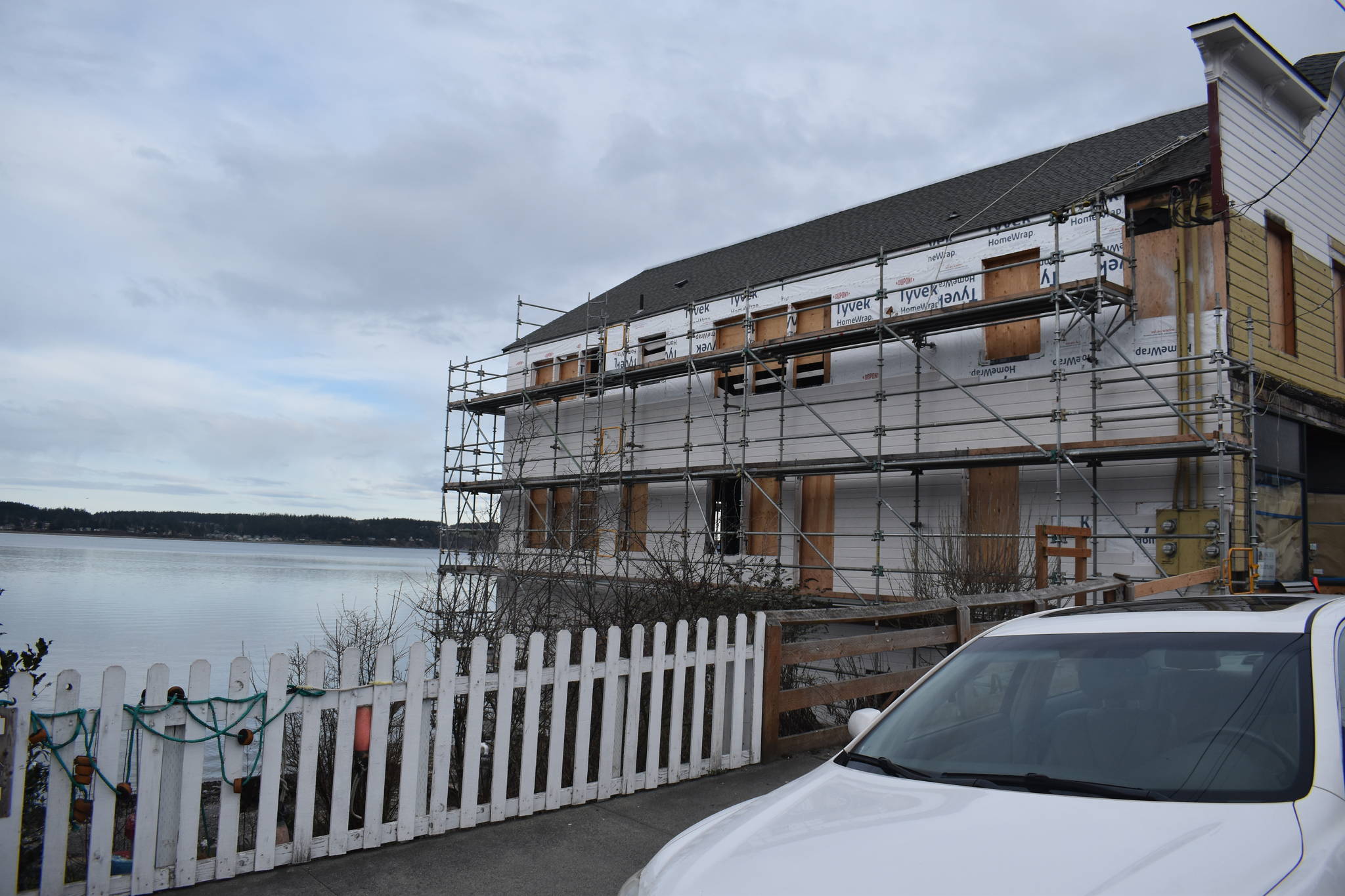A proposal for a new, 1,134-square-foot building next door to the historic Cash Store on Front Street in Coupeville has received a certificate of appropriateness from the Historic Preservation Commission.
The commission is a group that decides if a project conforms to design guidelines within Ebey’s Landing National Historical Reserve.
During a town council meeting last month, Mayor Molly Hughes said she believes the new construction will be the first new building on the downtown street since the Front Street Grill was built.
Barbara Summers and her husband, Von, own the parcel of waterfront property earmarked for the project.
The new structure will have a one-story commercial space at street level and residential space on the lower level.
Summers explained that she didn’t want to have a two-story street level building outshining the adjacent Coupeville Cash Store, which houses Sea Bre’s Yarn; the Summers also own that building.
For the new building, she pointed out that fold-up windows that open completely to show off the building’s interior are a unique feature she helped design for the plans.
Summers said it has been suggested that the plans should be adjusted slightly. The current plans have a door for the building on the side. The commission suggested relocating the door to face Front Street, which would match all the other businesses on the street.
“I can see the sort of logic in having the door be at the storefront on Front Street,” Summers said. “I want to think about that before I actually permit it.”
The building doesn’t even exist yet and Summers said that she has already gotten inquiries about it. She estimated that construction could finish by summer 2022, although she wants to avoid any building during this summer.
“No matter how careful you are, construction interferes with the tourism and the parking,” she said.
Eight feet away, the building historically known as the Coupeville Cash Store has recently been in dire need of some renovations.
Floor joists and roof trusses had been cut through during a prior remodel of the 1886 facility.
The foundation was also unstable and the building needed to be brought up to code.
Summers said work crews “gutted” the structure down to its studs, removing floor joists between the main and upper floors. The roof trusses were able to be supported. New plumbing and wiring were also installed.
The remodel was also able to expose some historical aspects of the building, such as original flooring and cabinets that were in the Cash Store.
“I feel good that we were able to preserve the historic elements of the building but still make it solid and safe,” Summers said.
For parts that couldn’t be salvaged, Summers did her best to have them replicated. She looked at old photographs and had windows replaced that matched the ones in the pictures. Original 8-foot entry doors to the store were too rotted to restore, so she had someone remake them. The floor joists were saved and custom made into something different.
As part of the updates, space will be redistributed. Sea Bre’s Yarn, the lone commercial tenant in the building, will have the front half of the building closest to Front Street, rather than the left half.
The back half will be reserved for vacation rentals, as will the second floor and the lower level where the Lower Loft Eatery used to be. The restaurant closed permanently last March, and Far From Normal, the other business located in the building, closed in the summer when the owner retired.
The renovations should finish within the next few months. Summers estimated Sea Bre’s Yarn would be able to move back into the Cash Store building as soon as May.
Deputy State Historic Preservation Officer Nicholas Vann said Summers’ project to update and preserve the historic building is on track to be the first on Whidbey in about 30 years to be certified for the state’s historic tax credit program.
The program offers a 20 percent tax deduction for people rehabilitating a historic building.
Since its inception, 300 projects have been certified through the program statewide and $1.3 billion in private expenditures has been spent through the program.
“In my opinion, it’s definitely underutilized statewide,” Vann said.
He added that many property owners are unable to meet the minimum amount of work needed to qualify for the incentives.
“Barb came in with a great proposal,” he said.



